How to grow plants in the onion family in New Zealand: chives, tree onions and Welsh onions
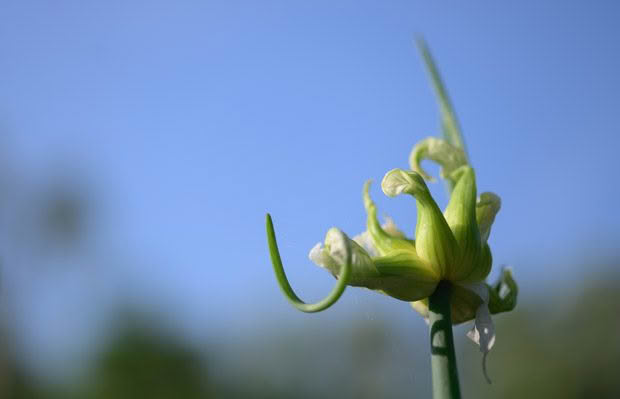
The onion family make a pretty and tasty addition to your garden.
Words: Jenny Somervell
My tree onion is threatening to completely engulf the tiny bed I planted it in. It’s living up to its alternate name – the walking or top-onion – and seems poised to take giant steps across and out of the garden. Propagating these is not necessary as they do it themselves so if you don’t remove the bulblets it will be allium ad infinitum!
This triffid-like member of the allium family sends fat, hollow stems skyward bearing curious clusters of small bulblets or pickling onions. When the stems get too top-heavy, the whole structure – stems, onions and all – topples down to the ground. Once you have a plant you can have a plantation: just break apart a cluster and pop individual bulbs where you want them to grow. This curious, eye-catching vertical ascent needs to stand on its own, and it’s so cool to look at.
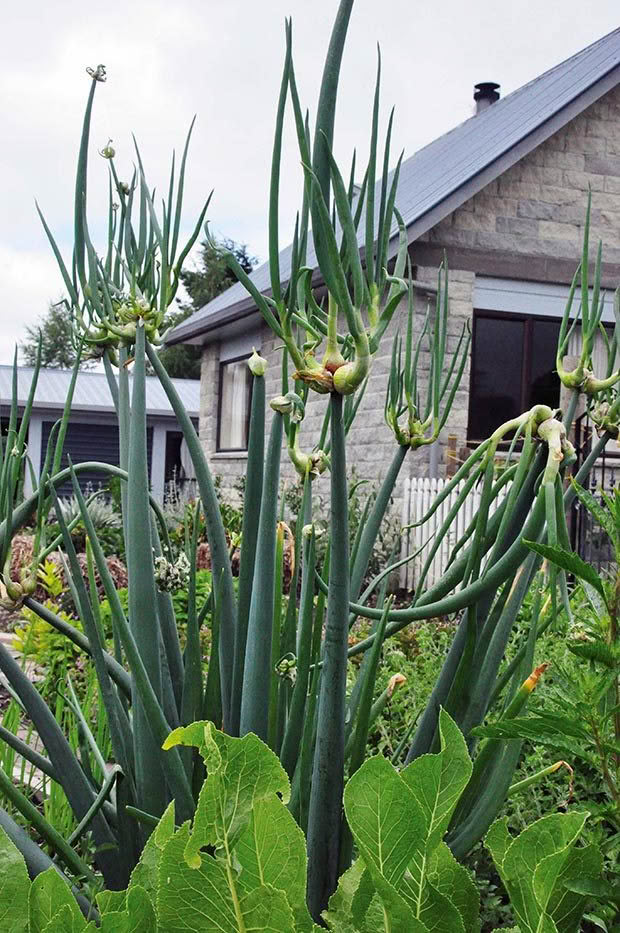
There are plenty of uses for them. The top bulblets provide the first, fresh green onions in spring (there are no offsets underground). In mid-summer, the whitened top bulbs can be peeled to make pearly pickles or dropped whole into ratatouille, soup, stews or fresh tomato sauce. For summer barbecues, roll them in oil and sauté on the grill (check they don’t fall through).
Tree onions are a novelty but they are not the mainstay of the allium harvest in my garden. We now have a bed of garlic, rows of Welsh onion (Allium fistulosum), spring onions and an attractive border of chives edging a salad plot.
Chives (Allium schoenoprasum) would be one of our cook’s most-picked herbs. The hollow tubular leaves, finely chopped, are a staple with scrambled eggs for our Sunday brunch each week. Chives grow easily, come away early in spring, and add a delicate onion flavour to a vast array of foods. As well as the leaves, the individual flowers or florets can be snipped off from the umbel and used to garnish salad-type dishes or can be sprinkled over hot dishes just before serving.
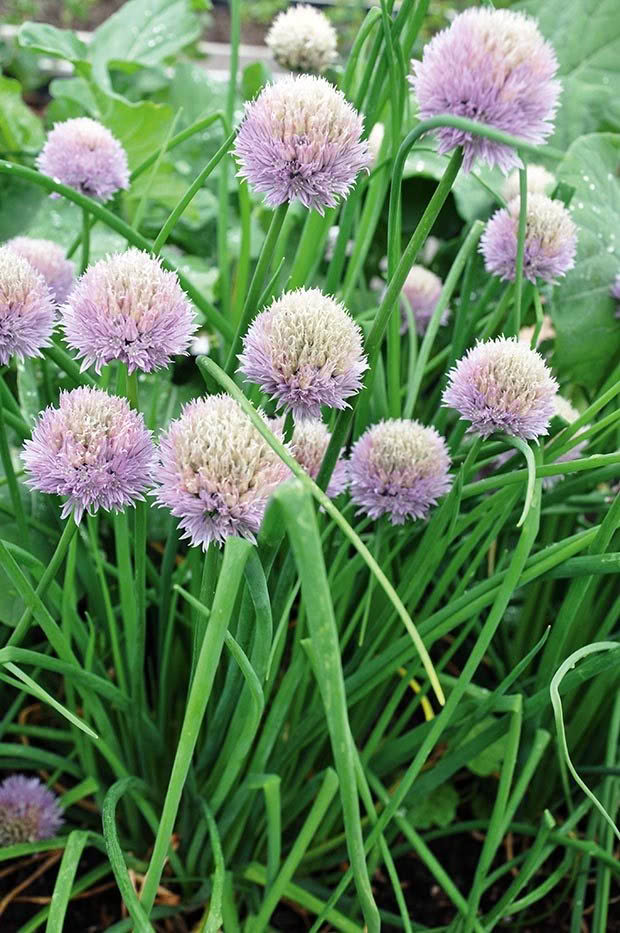
Chives flowers.
The secret to a good chives harvest is to have several plants so that some can be trimmed back to grow fresh young shoots. Chives clump up very quickly to a point where leaf production deteriorates. They need lifting, dividing and replanting regularly (about every 3-4 years) in fresh, enriched soil, or sooner if, like me, you plant them too close together.
Perhaps less well-known are Welsh onions, a mispronunciation of the German word ‘walsch’ meaning foreign. Welsh onions (Allium fistulosum) look rather like large, very vigorous spring onions. They grow from a strong bulbous-white base from where they increase into a clump or bunch of elongated white onions, hence the name ‘bunching onion’.
In China and Japan there are many types and they are used extensively in cooking. Single-stemmed types are often blanched by being earthed up like fine, sweet leeks. The hollow, vigorous leaves withstand frost.
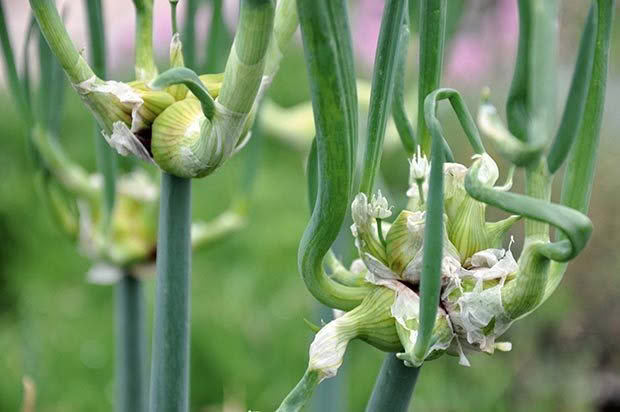
Bulbets on Jenny’s Tree Onion.
The whole plant, apart from roots and flowers, can be finely chopped and used in the same way as spring onions, shallots and chives. The leaves can be cut into little brushes to garnish baked fish, sliced thinly in stir-fries, or used in an appetiser tray of raw carrots and celery.
The easiest way to harvest them, since it is difficult to pull up individual plants, is to dig up the whole clump and then replant what is not needed. Since they are semi-permanent I have planted them next to my asparagus as they look good together. In spring they produce decorative, globular, tennis-ball-size heads of greenish white flowers on hollow stems. To keep them going, simply divide the clumps in autumn and replant about 10cm apart.
ALLIUM ATTRIBUTES
Genus: Allium
Examples: garlic, onions, leeks, chives, shallots, welsh onions and tree onions
Onions contain vitamins A, B1, B2, B3, C & E and nicotiamide. They have been used by sailors since Captain Cook’s time as a long-lasting preventative for scurvy caused by Vitamin C deficiency. Their strong smell is due to various sulphur compounds including sulfoxides and thiosulfinates.
Onion and garlic in particular have significant medicinal uses. They are well-documented to have anti-cancer, anti-clotting, anti-bacterial, anti-viral and decongestant properties. Wild onions were used by American settlers to treat colds, coughs, asthma, uses still recognised by the World Health Organisation (WHO) today. WHO also supports the use of onions for poor appetite and to prevent artherosclerosis. They are also rich in flavonoids, known to protect against cardiovascular disease.
Studies with animals and human populations have shown an inverse relationship between cancer and the frequency of eating allium vegtables. Many studies confirm that the thiosulfinates have anti-microbial activity, and garlic leads the way with four times the sulphur compounds of onion. In World War I the use of raw garlic juice to combat infection of suppurating wounds saved thousands of lives.
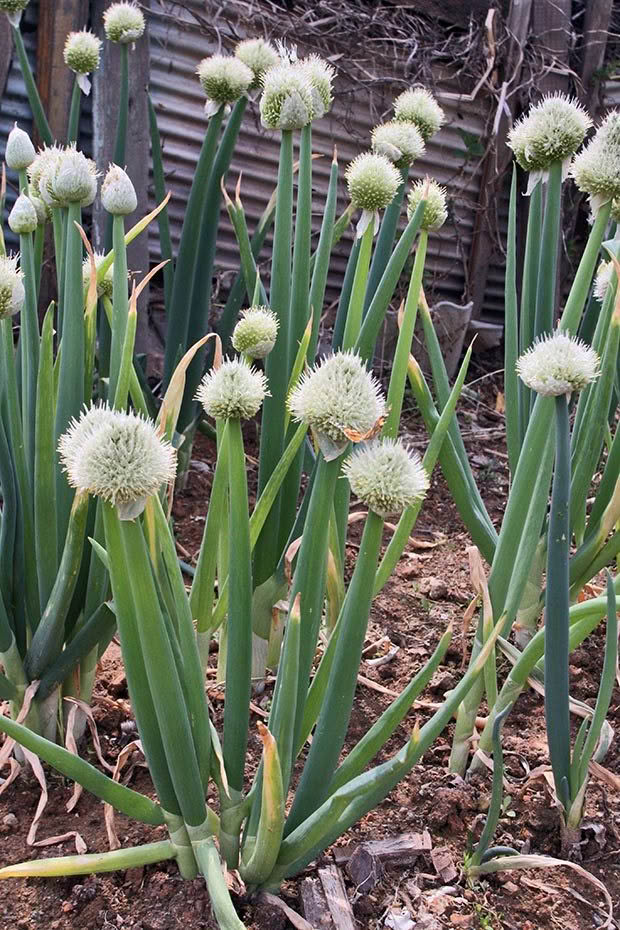
Welsh onion.
Pure allicin from fresh garlic shows activity against a wide range of bacteria, including multi-drug resistant E. coli, pathogenic fungi including Candida albicans, viruses, and many major human parasites.
The leaves of chives produce a pungent volatile oil, rich in sulphur. They have high anti-oxidant activity due to their rich flavonoid content. The medicinal value of Welsh onions and tree onions is less well-documented. Allium species that are milder tasting contain less sulphur compounds and could be expected to have similar but reduced activity.
ALLIUM COMPANION PLANTING
1. Chives are good companions with roses, fruit tree, courgettes and cucumbers, and gooseberries, and plants susceptible to powdery mildew.
2. Garlic discourages carrot fly, codling moth, brown rot and other fungal diseases.
HOW TO GROW GREAT CHIVES
Chives varieties: Common chives (sometimes called ‘fine-leaved’) grow about 15cm high with tiny rush-like leaves from a clump of very small, white bulbs. They are said to have the better flavour and texture. Siberian or broad-leaved chives are more vigorous, growing to 30cm in height, but otherwise are the same. Use the upper part of older leaves as the lower portions can be tough to eat raw.
I have grown both from seed and use both in cooking. Unfortunately they are unlikely to be identified in garden centres. You need to see them together to know the difference. Both die-back in winter.
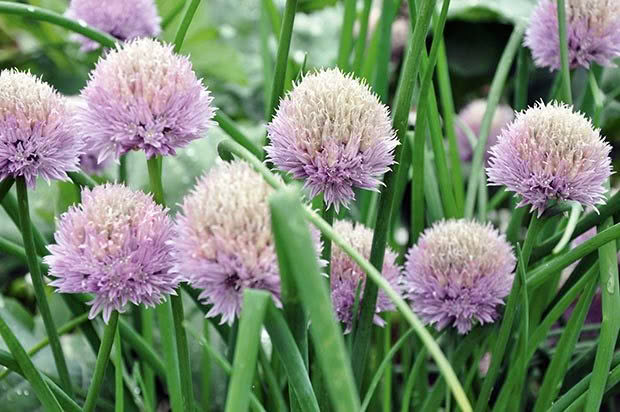
Broad-leaved chive variety.
Propagation: Chives are easily grown from seed but it takes a while for plants to clump up enough to harvest. The easiest method is to divide a clump into 6-8 strong bulbs and plant about 25cm apart for common chives and 40cm for the larger variety.
Chive must-haves:
– good, rich soil and full sun.
– chives are native to moist pastures and stream banks and like moisture, especially in summer.
– allow plenty of space – avoid over-crowding from other plants.
– supply extra nutrients during the picking season, eg compost, liquid feed.
How to harvest:
– young leaves have the best flavour.
– never shear chives at ground level – it can kill the plant. If you do shear chives, always leave at least 5cm above ground. Don’t cut too hard or too often.
– Hand-picking leaves results in more leaves, faster. Pick one leaf at a time 2-3 cm from the soil surface, leaving the small replacement leaf.
Chives and food:
– Chop chives with a sharp knife into 2-5mm section. Use young tender leaves and discard any tough, lower leaf sections.
– Can be used in almost any savoury dish.
– Add to freshly-cooked veges just before serving, especially: corn, potatoes, tomatoes, courgettes, cucumber, cauliflower, asparagus, beans.
– Add to egg dishes, scrambled, stuffed, baked or in omelettes.
– Chop finely into mixed leaf salads, cheese spreads, cheese balls and dips. Substitute tree onion leaves when chives are dormant.
– Snip flowers into salads and hot dishes as a flavoursome garnish. Make a V -shaped cut upwards into the flower head and individual florets will fall off the stem.
Recipe: Ken’s Avocado and Salmon Dip with Chives
INGREDIENTS
2 ripe avocados
100g smoked salmon
250g sour cream
4 cloves garlic
3-4 stalks of fresh chives
2 fresh chives flowers
Rind and juice of lime
Salt and pepper to taste
METHOD
Mash avocados and blend with the sour cream, finely-chopped salmon, chopped or crushed garlic and finely-chopped chives. Add salt and freshly-ground black pepper to taste. Remove the florets from the head of the chives flowers as described at left. Finely chop the florets and mix into the dip. Place the dip in the serving dishes and use the remaining florets (unchopped) to decorate.

SUMMER SALAD TIP
Combine chunks of cucumber, ripe tomatoes (colourful heirloom ones are attractive) and feta cheese with finely-sliced chives. Add a sprinkling of virgin oil and season with freshly ground salt and pepper.
Yummy cherry tomatoes: Saute 1-2 cloves finely-chopped garlic, in a little olive oil. Add cherry tomatoes cut in half and sauté another 2 minutes or so. Add finely chopped chives, salt and freshly ground pepper. (‘The Cook’s Garden’, by Mary Browne, Helen Leach & Nancy Tichbourne)
Love this story? Subscribe now!
 This article first appeared in NZ Lifestyle Block Magazine.
This article first appeared in NZ Lifestyle Block Magazine.
